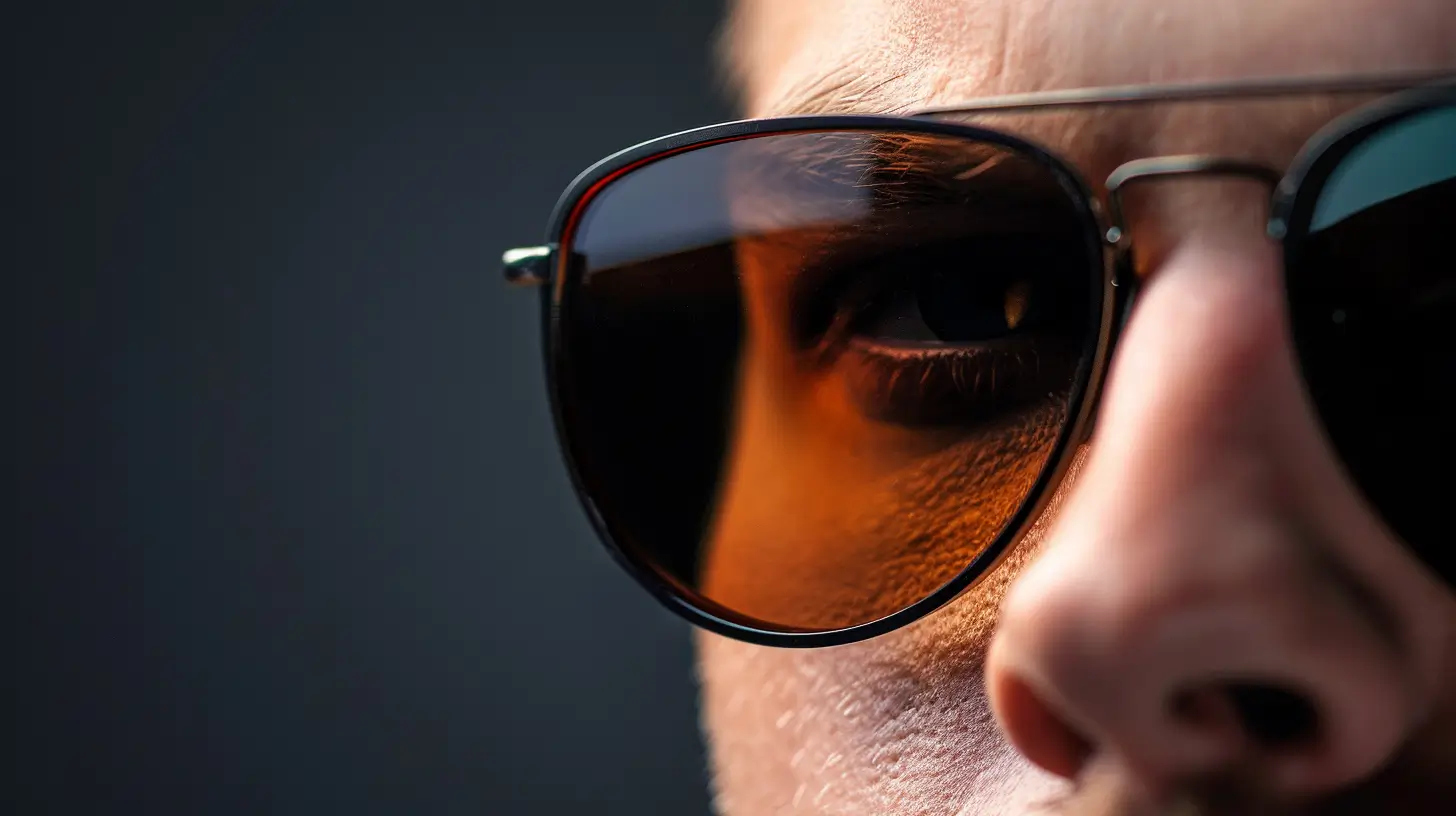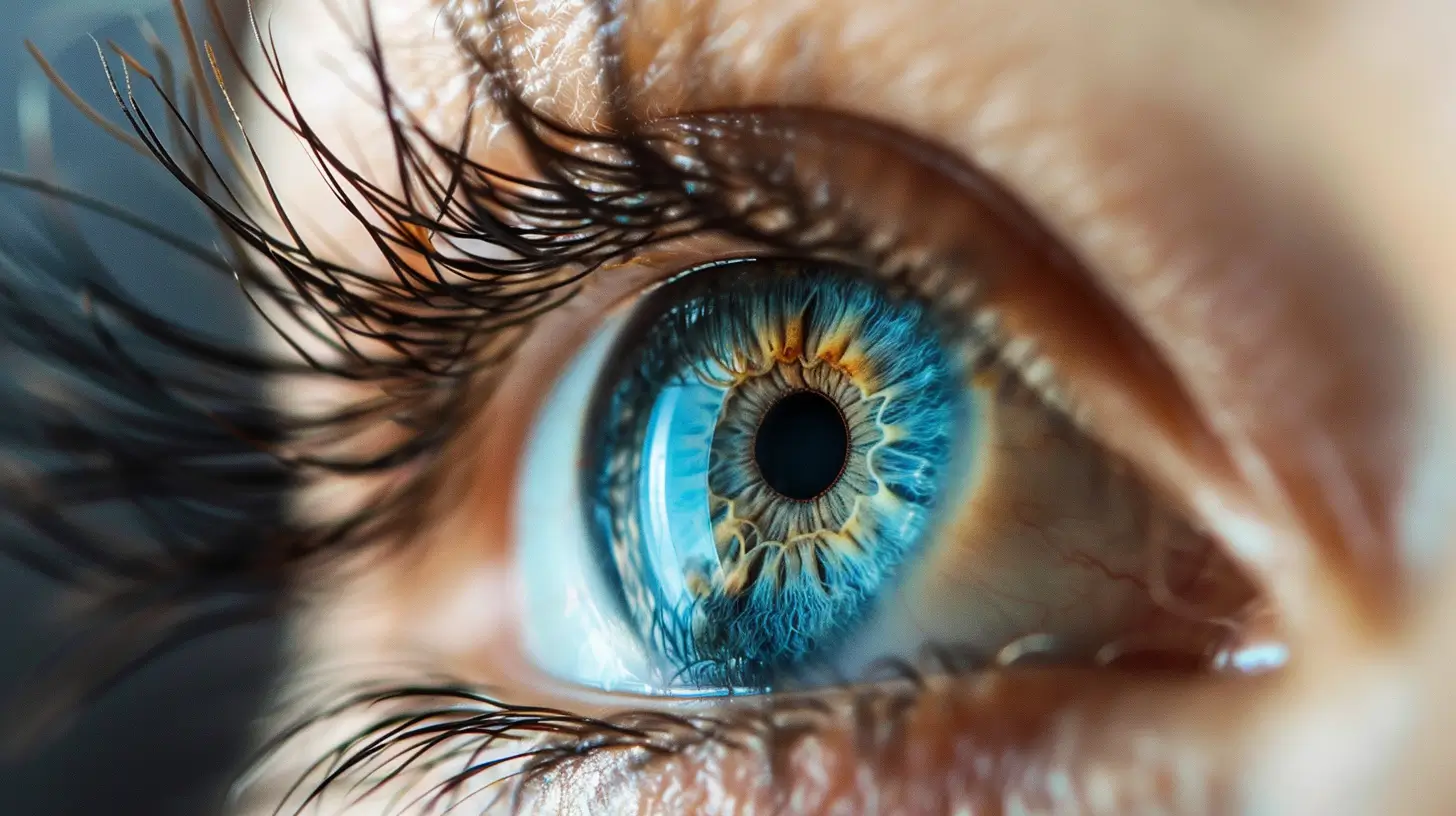Understanding Legal Blindness: Prescriptions, Visual Acuity, and Daily Life Implications
2024-03-07 | By Orcam Staff

When someone is considered legally blind, it means that their vision is severely impaired and cannot be corrected with glasses or contact lenses. This can have a significant impact on their daily life and may require accommodations and support. In this article, we will explore what it means to be blind in a legal sense, the prescription for legal blindness, and the implications it has on daily life.
Legal blindness is a challenging condition that can significantly impact a person's independence and daily functioning. Individuals with this problem often rely on visual aids like magnifying glasses or large-print materials to perform tasks that others may take for granted. Navigating unfamiliar environments or crowded areas can be particularly daunting due to the limited field of vision. Overall, legal blindness requires individuals to adapt and seek additional support to maintain a good quality of life despite the visual limitations they face.
What is Legal Blindness?
According to the Social Security Administration, legal blindness is defined as having a visual acuity of 20/200 or worse in the better eye with the best possible correction, or having a visual field of 20 degrees or less. This means that someone with legal blindness has a visual impairment that cannot be corrected with glasses or contact lenses and has a significant impact on their daily life.
Visual Acuity and Legal Blindness
Visual acuity is a measure of how well a person can see. It is typically measured using a Snellen chart, which displays letters of varying sizes. The first number in a visual acuity measurement represents the distance at which the person is standing from the chart, and the second number represents the distance at which a person with normal vision can read the same line. For example, someone with 20/20 vision can read the same line from 20 feet away that a person with normal vision can read from 20 feet away.
What is 20/200 vision?
20/200 vision means that a person can see at 20 feet what someone with normal vision can see at 200 feet. It indicates severe visual impairment.
A visual acuity of 20/200 means that someone with legal blindness can only read the top letter on the Snellen chart from 20 feet away, while someone with normal vision can read the same letter from 200 feet away. This level of visual acuity is considered legally blind.
What 20/200 Vision Looks Like
Having 20/200 vision means that a person can see at 20 feet what a person with normal vision can see at 200 feet. This indicates severe visual impairment and is often considered legally blind. Individuals with 20/200 vision may experience extreme blurriness, difficulty recognizing faces, and challenges reading small print.
They may rely heavily on visual aids such as magnifying glasses or large-print materials to perform everyday tasks. Navigating unfamiliar environments or crowded areas can be particularly challenging, as details are difficult to discern at a distance. Overall, 20/200 vision greatly impacts a person's ability to function independently and may require additional support or accommodations.
Visual Field & Legal Blindness
Visual field refers to the area that a person can see while looking straight ahead. A normal visual field is around 180 degrees, while someone with legal blindness has a visual field of 20 degrees or less. This means that they have a very limited field of vision and may have difficulty seeing objects or people on their sides.
What is the Prescription for Legal Blindness?

Can You Be Legally Blind with Glasses?
The prescription for legal blindness varies depending on the individual's visual acuity and visual field. In most cases, someone that is legally blind will have a prescription for glasses or contact lenses, but their vision cannot be fully corrected. This means that even with glasses or contacts, they will still have a visual acuity of 20/200 or worse in their better eye.
Prescription for legally blind people:
Utilize large print or Braille labels on prescription bottles
Request digital copies of prescription information for use with screen-reading software
Seek out prescription medication identification tools or apps designed for visually impaired individuals
Consider enrolling in mail-order prescription services for easy refills
Communicate with healthcare providers about any visual impairments to ensure understanding and accommodation
What Prescription is Legally Blind?
The prescription for legal blindness is not a specific number or measurement. As mentioned earlier, legal blindness is determined by a combination of visual acuity and visual field. Someone with a visual acuity of 20/200 or worse in their better eye and a visual field of 20 degrees or less is considered legally blind.
Is 5.5 Eyesight Legally Blind?
A visual acuity of 5.5 is equivalent to 20/400, which is considered blind in a legal sense. However, it is important to note that visual acuity is not the only factor in determining legal blindness. Someone with a visual acuity of 5.5 may not be considered legally blind if their visual field is within the normal range.
Legal Blindness Without Glasses
When someone is legally blind without glasses, it means that their vision is severely impaired and cannot be fully corrected even with visual aids. Legal blindness is determined by a combination of visual acuity and visual field. A person qualifies if they have a visual acuity of 20/200 or worse in their better eye and a visual field of 20 degrees or less, regardless of wearing glasses or contact lenses.
Legal Blindness Prescription
What is the prescription to be legally blind?
The prescription for legal blindness is not a specific number but rather a threshold of visual impairment. Individuals with a visual acuity of 20/200 or worse in their better eye and a visual field of 20 degrees or less are classified as legally blind. While glasses or contact lenses may be prescribed for those who are legally blind, these visual aids cannot fully correct their vision to normal levels.
In summary, legal blindness without glasses signifies a severe visual impairment that cannot be corrected, and the prescription for legal blindness is based on specific criteria related to visual acuity and visual field.
Daily Life Implications of Legal Blindness
Legal Rights
Suffering from this condition comes with certain legal rights and protections. In the United States, the Americans with Disabilities Act (ADA) prohibits discrimination against individuals with disabilities, including those who are legally blind. This means that employers, businesses, and public entities must provide reasonable accommodations for individuals that are visually impaired to ensure equal access and opportunities.
Visual Impairment and Disability Rights
This issue is considered a disability, and individuals with legal blindness are entitled to certain rights and protections under the law. This includes access to education, employment, and public services. It is important for individuals with low vision to understand their rights and advocate for themselves to ensure they receive the necessary accommodations and support.
Daily Life with Legal Blindness
Living with this condition can present many challenges in daily life. Simple tasks such as reading, writing, and navigating can become difficult or impossible without the use of assistive devices or accommodations. Many individuals with legal blindness use tools such as magnifiers, screen readers, and braille to help them with daily tasks.
In addition to physical challenges, this condition can also have a significant impact on a person's mental and emotional well-being. It is important for individuals with this condition to seek support and resources to help them cope with the challenges they may face.
Assistive Devices for Low Vision and Vision Impairment
Individuals with low vision or vision impairment often rely on assistive devices to help them navigate daily tasks and activities. These devices are designed to enhance visual capabilities and improve independence for those with visual challenges. One such innovative device is the OrCam MyEye.
OrCam MyEye
The OrCam MyEye is a cutting-edge assistive technology device that is designed to assist individuals with low vision or vision impairment. This device uses artificial intelligence to recognize and identify text, faces, products, and more in real-time. By simply pointing at an object or text, the OrCam MyEye can read aloud the information to the user, providing valuable assistance in various situations.
In addition to text recognition, the OrCam MyEye can also recognize faces, allowing users to identify people around them. This feature can be particularly helpful in social settings or when interacting with others.
Overall, assistive devices like the OrCam MyEye play a crucial role in enhancing the quality of life for individuals with low vision or vision impairment, empowering them to overcome challenges and engage more fully in daily activities.
Conclusion
Legal blindness is a term used to describe severe visual impairment that cannot be corrected with glasses or contact lenses. It is determined by a combination of visual acuity and visual field, with a visual acuity of 20/200 or worse and a visual field of 20 degrees or less being considered legally blind.
Living with legal blindness can present many challenges, but with the right support and accommodations, individuals that are legally blind can lead fulfilling lives. It is important for society to understand and accommodate the needs of those with legal blindness to ensure equal access and opportunities for all.



